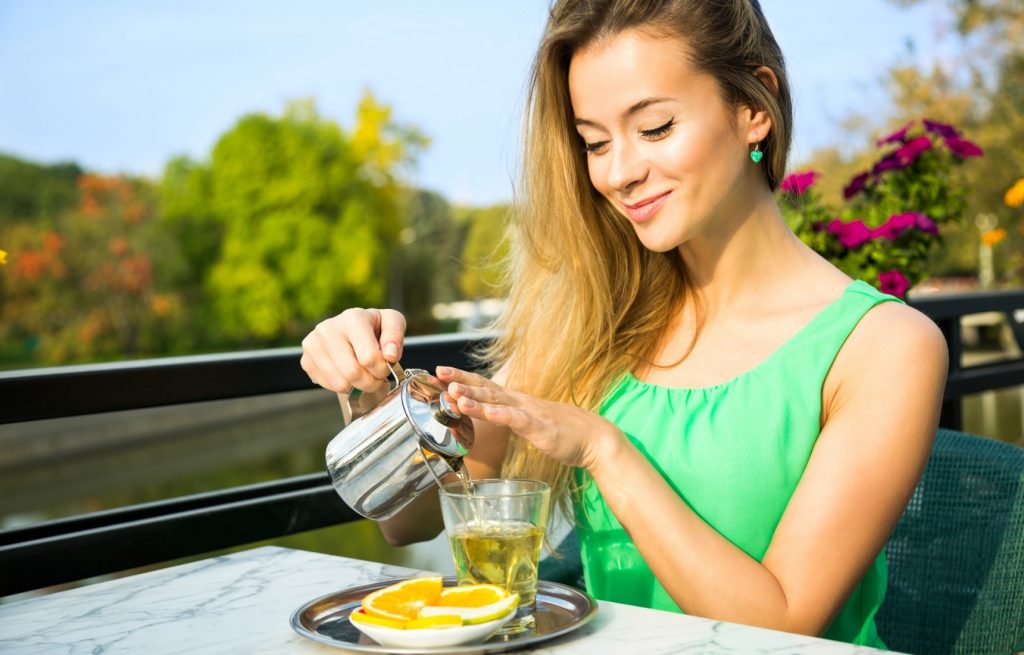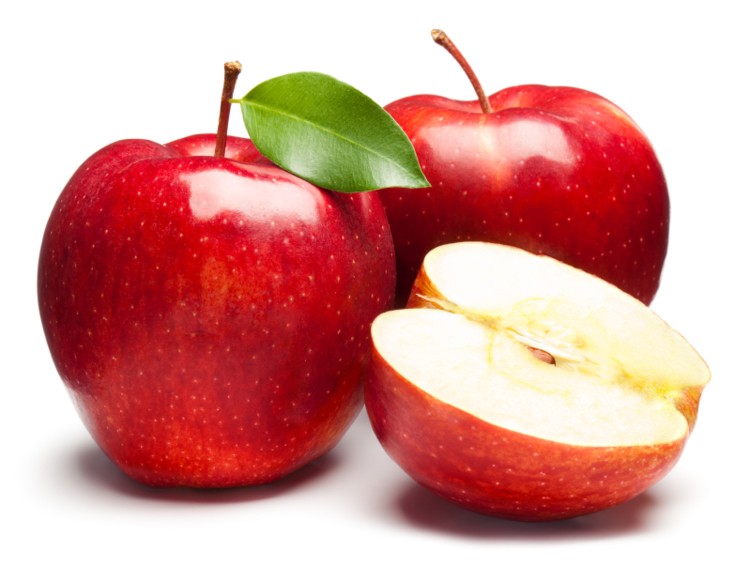High blood pressure, or hypertension, is called the “silent killer” for good reason. It often has no symptoms but is a significant risk for heart disease and stroke. And these ailments are among the top causes of death in the USA.
Approximately one in 3 U.S. adults has high blood pressure.
Your blood pressure is measured in millimeters of mercury, which can be abbreviated as mm Hg. There are two numbers involved with the dimension:
- Systolic blood pressure. The top number represents the pressure on your blood vessels when your heartbeats.
- Diastolic blood pressure. The lowest number represents the pressure on your blood vessels between beats, as soon as your heart is resting.
Your blood pressure depends on how much blood your heart is pumping, and how much resistance there is to blood flow in your arteries. The narrower your arteries, the higher your blood pressure.
Blood pressure lower than 120/80 mm Hg is deemed normal. Blood pressure that’s 130/80 mm Hg or more is believed high. If your amounts are normal but under 130/80 mm Hg, you fall in the category of elevated blood pressure. This means that you are at risk for developing high blood pressure.
The good news about elevated blood pressure is that lifestyle changes can significantly reduce your amounts and lower your risk — without needing medications.
Listed below are 17 effective ways to Decrease Your blood pressure levels:
1. Increase exercise and activity more
In a 2013 study, sedentary older adults who engaged in aerobic exercise training lowered their blood pressure by a mean of 3.9 percent systolic and 4.5 percent increased. These outcomes are as great as a few blood pressure medications.
As you frequently increase your breathing and heart rates, over time that your heart gets stronger and pumps with less effort. This places less strain on your arteries and reduces your blood pressure.
How much action should you strive for? A 2013 report from the American College of Cardiology (ACC) and the American Heart Association (AHA) advises moderate- to vigorous-intensity physical activity for 40-minute sessions, three to four times per week.
If finding 40 minutes at one time is a struggle, there might still be advantages once the period is divided into three or four 10- to 15-minute segments during the day.
The American College of Sports Medicine (ACSM) makes similar recommendations.
But you don’t have to run marathons. Increasing your activity level can be as simple as:
- Using the stairs
- Walking Rather than driving
- Doing household chores
- Gardening
- Going to get a bicycle ride
- Playing a team sport
Simply do it frequently and work up to at least half an hour per day of moderate activity.
One instance of moderate activity that may have large effects is tai chi. A 2017 review on the effects of tai chi and higher blood pressure indicates a general average of a 15.6 mm Hg drop in systolic blood pressure and a 10.7 mm Hg drop in diastolic blood pressure, compared to individuals who did not exercise at all.
A 2014 review on exercise and lowering blood pressure discovered that there are lots of combinations of exercise that could lower blood pressure. Aerobic exercise, resistance training, high-intensity interval training, brief bouts of exercise throughout the day, or walking 10,000 steps each day can all decrease blood pressure.
Ongoing studies continue to suggest there are still advantages to light physical activity, particularly in elderly adults.

2. Lose weight if you’re overweight
If you are overweight, losing even 5 to 10 pounds can reduce your blood pressure. Besides, you’ll lower your risk for other medical issues.
A 2016 review of many studies reported that weight-loss diets reduced blood pressure by a mean of 3.2 mm Hg diastolic and 4.5 mm Hg systolic.
3. Cut back on sugar and processed carbohydrates
Many scientific studies show that restricting sugar and refined carbohydrates can help you lose fat and lower your blood pressure.
A 2010 study compared a low-carb diet to a low-carb diet. The low-carb diet contained diet medication. The two diets produced weight reduction, but the low carb diet was a lot more effective in lowering blood pressure.
The low carb diet reduced blood pressure by 4.5 millimeters Hg diastolic and 5.9 millimeters Hg systolic. The diet of low carb plus the diet drug lowered blood pressure by only 0.4 millimeter Hg diastolic and 1.5 millimeter Hg systolic.
A 2012 evaluation of low carb diets and heart disease risk discovered these diets lowered blood pressure by an average of 3.10 millimeter Hg diastolic and 4.81 mm Hg systolic.
Another side effect of a low-carb, low-sugar diet is you are feeling fuller longer because you’re swallowing more protein and fat.
4. Eat more potassium and less sodium
Increasing your potassium ingestion and cutting back on salt can also lower your blood pressure.
Potassium is a double winner: It reduces the effects of salt in your system and eases tension in blood vessels. But diets rich in potassium may be harmful to individuals with kidney disease, so speak to your doctor before increasing your potassium intake.
It’s easy to eat more potassium — so many meals are naturally high in potassium. Here is a couple:
- Low-fat dairy foods, including milk and yogurt
- Fish
- Fruits, including bananas, apricots, avocados, and oranges
- Vegetables, such as sweet potatoes, berries, tomatoes, greens, and spinach
Note that people respond to salt differently. Some people are salt-sensitive, meaning that a higher salt intake raises their blood pressure. Others are salt-insensitive. They are able to have a higher salt consumption and excrete it in their pee without increasing their blood pressure.
The National Institutes of Health (NIH) recommends decreasing salt consumption with the DASH (Dietary Approaches to Stop Hypertension) diet. The DASH diet highlights:
- Low-sodium foods
- Fruits and vegetables
- Low-fat dairy
- Entire grains
- Fish
- Poultry
- Legumes
- Fewer sweets and red meats
5. Eat less processed foods
The majority of the extra salt in your diet comes from processed foods and meals from restaurants, not your salt shaker in your home. Popular high-salt items comprise deli meats, canned soup, pizza, chips, and other processed snacks.
Foods labeled”low-fat” are usually high in salt and sugar to compensate for the reduction of fat. Fat is what provides food flavor and makes you feel complete.
Cutting down on — or even better, cutting out — processed meals will allow you to consume less salt, less sugar, and even fewer refined carbohydrates. All of this could result in reduced blood pressure.
Make it a practice to check tags. As stated by the U.S. Food and Drug Administration (FDA), a sodium listing of 5 percent or less on a food label is considered low, whereas 20 percent or more is considered large.
6. Quit smoking
Stopping smoking is fantastic for your all-around health. Smoking causes an immediate but temporary increase in your blood pressure and an increase in your heart rate.
In the long term, the chemicals in tobacco may improve your blood pressure by damaging your arteries, causing inflammation, and narrowing your blood vessels. The hardened arteries cause greater blood pressure.
The chemicals in tobacco can affect your blood vessels even if you’re around secondhand smoke. A study showed that kids around secondhand smoke at the home had higher blood pressure compared to people from nonsmoking homes.
7. Reduce excess stress
We are living in trying times. Workplace and family demands, national and global politics — they all contribute to strain. Finding methods to reduce your own stress is very important to your well-being and your blood pressure.
There are lots of unique tactics to successfully alleviate stress, so find what works for you. Exercise deep breathing, have a walk, read a book, or watch a comedy.
Listening to the audio every day has also been shown to decrease systolic blood pressure. A current 20-year study revealed that regular sauna use decreased departure from heart-related events. And one little study has shown that acupuncture can reduce both systolic and diastolic blood pressure.
8. Try yoga or meditation
Mindfulness and meditation, such as transcendental meditation, have long been used — and studied — as ways to reduce stress. A 2012 study notes that one college program in Massachusetts has had more than 19,000 individuals participate in a mindfulness and meditation program to reduce anxiety.
Yoga, which generally involves breathing management, posture, and meditation techniques, may also be effective in reducing stress and blood pressure.
A 2013 evaluation on yoga and blood pressure discovered an average blood pressure decrease of 3.62 mm Hg diastolic and 4.17 millimeter Hg systolic compared to those who did not exercise. Studies of yoga clinics that included breath control, postures, and meditation were almost twice as effective as yoga practices which didn’t include all three of these elements.
9. Eat some dark chocolate
Yes, chocolate lovers: Dark chocolate has been demonstrated to reduce blood pressure.
But the dark chocolate should be 60 to 70 percent cacao. A review of research on black chocolate has found that eating one or two squares of dark chocolate every day can help lower the chance of heart disease by lowering blood pressure and inflammation. The benefits are considered to come from the flavonoids present in chocolate using more cocoa solids. The flavonoids help dilate, or expand, your blood vessels.
A 2010 analysis of 14,310 people found that individuals without hypertension who ate more black chocolate had reduced blood pressure overall than those who consumed less black chocolate.
10. Try out these medicinal herbs
Herbal medications have been used in many cultures to treat a variety of ailments.
Some herbs have even been proven to potentially reduce blood pressure. Although, more study is required to spot the doses and components in the herbs which are most useful.
Always check with your physician or pharmacist before taking herbal supplements. They may interfere with your prescription medications.
Here’s a partial list of plants and herbs that are used by cultures across the world to Reduce blood pressure:
- Black bean (Castanospermum australe)
- Cat’s claw (Uncaria rhynchophylla)
- Celery juice (Apium graveolens)
- Oriental hawthorn (Crataegus pinnatifida)
- Ginger root
- Giant dodder (Cuscuta reflexa)
- Indian Plantago (blonde psyllium)
- Maritime pine bark (Pinus pinaster)
- River lily (Crinum glaucum)
- Roselle (Hibiscus sabdariffa)
- Sesame oil (Sesamum indicum)
- Tomato Extract (Lycopersicon esculentum)
- Tea (Camellia sinensis), particularly green tea and oolong tea
- Umbrella tree bark (Musanga cecropioides)
11. Make sure to get good, restful sleep
Your blood pressure typically drops when you are sleeping. If you do not sleep well, it can affect your blood pressure. Individuals who experience sleep deprivation, in particular those that are middle-aged, have an increased risk of high blood pressure.
For some people, getting a fantastic night’s sleep isn’t simple. There are many means to assist you to get restful sleep. Consider setting a normal sleep schedule, spend some time relaxing at night, exercise throughout the day, avoid daytime naps, and create your bedroom comfortable.
The nationwide Sleep Heart Health Study found that frequently sleeping less than 7 hours every night and more than 9 hours every night was correlated with a greater incidence of hypertension. Regularly sleeping less than 5 hours a night was connected to a significant risk of hypertension extended term.
12. Eat garlic or take garlic extract supplements
Fresh garlic or garlic infusion are both widely utilized to lower blood pressure.
According to one clinical research, a time-release garlic extract preparation might have a better impact on blood pressure compared to traditional garlic powder tablets.
One 2012 review noted that a study of 87 individuals with higher blood pressure that saw a diastolic reduction of 6 millimeter Hg and a systolic decrease of 12 millimeter Hg in people who consumed garlic, compared to people with no therapy.
13. Eat healthful low-fat foods
A long-term research concluded in 2014 found that people who ate more protein had a significantly lower chance of high blood pressure. For those who ate an average of 100 g of protein per day, there was a 40 percent reduced risk of having high blood pressure than people on a low-protein diet. Those who added regular fiber into their diet saw around a 60 percent reduction of danger.
But a low-carb diet may not be for everyone. People who have kidney disease might need to use caution, so speak with your physician.
It is rather simple to consume 100 grams of protein every day on most types of diets.
High-protein foods contain:
- Fish, like salmon or canned tuna in water
- Eggs
- Poultry, like chicken breast
- Beef
- Legumes and legumes, including kidney beans and lentils
- Nuts or nut butter like peanut butter
- Chickpeas
- Cheese, such as cheddar
A 3.5-ounce (ounce) Serving of salmon can have as much as 22 g (g) of protein, even though a 3.5-oz. serving of chicken breastfeeding could comprise 30 g of protein.
With regards to vegetarian options, a half-cup serving of most types of beans contains 7 to 10 grams of protein. Two tablespoons of peanut butter could provide 8 g.
14. Take these BP-lowering supplements
These nutritional supplements are readily available and also have shown promise for reducing blood pressure:
Omega-3 polyunsaturated fatty acid
Adding omega-3 polyunsaturated fatty acids or fish oil to your diet can have many advantages.
A meta-analysis of fish oil and blood pressure found an average blood pressure reduction in those with a high blood pressure of 4.5 mm Hg systolic and 3.0 mm Hg diastolic.
Whey protein
This protein complicated derived from milk might have a lot of health benefits, in addition to potentially lowering blood pressure.
Magnesium
Magnesium deficiency is connected to high blood pressure. A meta-analysis discovered a small reduction in blood pressure with magnesium supplementation.
Coenzyme Q10
In a few smaller studies, the antioxidant CoQ10 lowered increased blood pressure by 17 mm Hg and diastolic around 10 millimeter Hg.
Citrulline
Cosmetic L-citrulline is a precursor to L-arginine within the entire body, a building block of protein, which may reduce blood pressure.
15. Drink less alcohol
Alcohol can increase your blood pressure, even when you’re healthy.
It’s important to drink. Alcohol can increase your blood pressure by 1 millimeter Hg for every 10 g of alcohol consumed. A standard drink contains 14 grams of alcohol.
What constitutes a standard drink? 1 12-ounce beer, 5 ounces of wine, or 1.5 ounces of distilled spirits.
Moderate drinking is up to one drink per day for women and up to 2 drinks per day for men.
16. Consider cutting back on caffeine
Caffeine raises your blood pressure, but the impact is temporary. It lasts 45 to 60 minutes and the response changes from individual to individual.
Some folks may be more sensitive to caffeine than others. If you’re caffeine-sensitive, you may choose to cut back on your java consumption or attempt decaffeinated coffee.
Research on caffeine, including its health benefits, is in the news a lot. The option of whether to cut back depends on many different factors.
One older study indicated that caffeine’s impact on raising blood pressure is greater if your blood pressure is already high. The same study, however, called for more study on the subject.
17. Take prescription medication
If your blood pressure is very high or doesn’t decrease after making these lifestyle changes, your physician may recommend prescription drugs. They operate and will improve your long term outcome, particularly in the event that you have additional risk factors. However, it may take a while to find the ideal mix of medications.
Speak with your physician about possible medications and what may work best for you.





